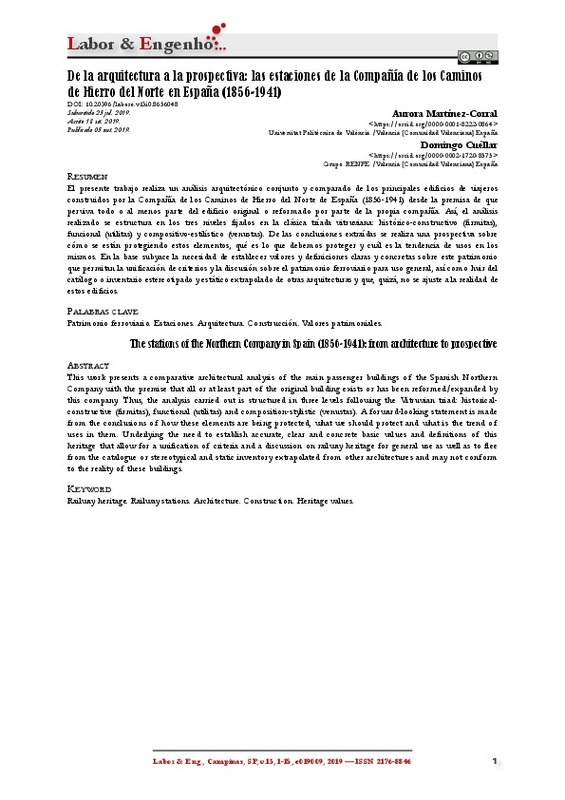JavaScript is disabled for your browser. Some features of this site may not work without it.
Buscar en RiuNet
Listar
Mi cuenta
Estadísticas
Ayuda RiuNet
Admin. UPV
De la arquitectura a la prospectiva: las estaciones de la compañía de los caminos de Hierro del Norte en España (1856-1941)
Mostrar el registro completo del ítem
Martínez-Corral, A.; Cuéllar, D. (2019). De la arquitectura a la prospectiva: las estaciones de la compañía de los caminos de Hierro del Norte en España (1856-1941). Labor & Engenho. 13:1-15. https://doi.org/10.20396/labore.v13i0.8656048
Por favor, use este identificador para citar o enlazar este ítem: http://hdl.handle.net/10251/159139
Ficheros en el ítem
Metadatos del ítem
| Título: | De la arquitectura a la prospectiva: las estaciones de la compañía de los caminos de Hierro del Norte en España (1856-1941) | |
| Otro titulo: |
|
|
| Autor: | Cuéllar, Domingo | |
| Entidad UPV: |
|
|
| Fecha difusión: |
|
|
| Resumen: |
[EN] This work presents a comparative architectural analysis of the main passenger buildings of the Spanish Northern
Company with the premise that all or at least part of the original building exists or has been reformed/expanded ...[+]
[ES] El presente trabajo realiza un análisis arquitectónico conjunto y comparado de los principales edificios de viajeros
construidos por la Compañía de los Caminos de Hierro del Norte de España (1856-1941) desde la premisa ...[+]
|
|
| Palabras clave: |
|
|
| Derechos de uso: | Reconocimiento - No comercial (by-nc) | |
| Fuente: |
|
|
| DOI: |
|
|
| Editorial: |
|
|
| Versión del editor: | https://doi.org/10.20396/labore.v13i0.8656048 | |
| Tipo: |
|









